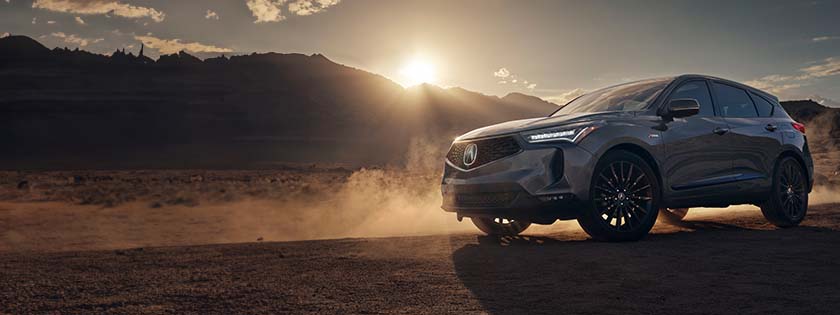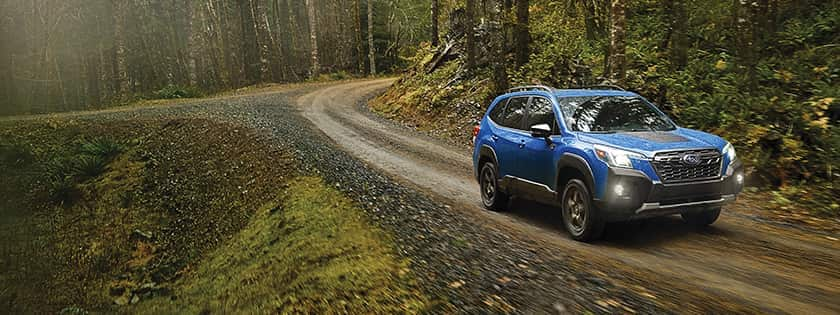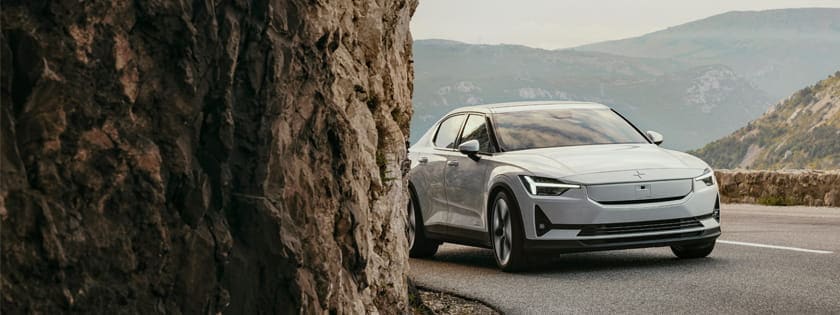
We recently spent a few days with the new 2014 Audi RS 7, a sedan that could play both lead roles in Beauty and the Beast. The beauty part is hard to miss because it shares its knockout bodywork with the A7 and S7.
The beast lives under the hood and beneath a layer of plastic engine compartment dress-up parts. There's a 4.0-liter 560-horsepower V8 lurking under there, with a single turbo sitting low in the vee where it can be fed directly by "hot side inside" reverse-flow heads. Its fury pours out through an eight-speed automatic transmission and Quattro all-wheel drive.
And so the RS 7 leaps from zero to 60 in just 3.4 seconds (3.2 seconds if you factor in 1 foot of rollout like some magazines we know, even though they shouldn't because it says zero right there in the description). Shortly thereafter the quarter-mile is history in just 11.7 seconds as the RS 7 crosses the stripe at over 121 mph.
The suspension, brakes and tires are up to the task. At the track the beastly Audi needs just 108 feet to stop from 60 mph. It snakes between the slalom cones at 68.3 mph and orbits the skid pad at a two-way average of 0.96g. Impressive, but not quite as otherworldly as the acceleration numbers — until you remember the RS 7 is a luxurious 4,500-pound four-door sedan, and a reasonably stealthy one at that.
We can't tear the engine down, but we can hoist the 2014 Audi RS 7 up on our Rotary 2-post lift to see what makes it light on its feet.

Like many of their products, the Audi "7-series" family uses a variation of the double-wishbone front suspension with a high-mount upper arm. Try not to fixate on the brakes just yet. We'll get to them later.

The variation in question comes in two forms. First, the upper "wishbone" is, in fact, two distinct links, each with its own ball joint. The upper steering pivot point is a virtual one that exists in space outboard of the two ball joints, where the two links would intersect if they were longer.
The second difference is the use of air springs instead of coils. The red hose and the wire next to it are part of the control system. RS Adaptive Air Suspension is standard on the RS 7, and it does an excellent job of smoothing the ride while still keeping the body flat and stable.

Those front air springs encircle adjustable monotube dampers in the same way that coil springs do in a coil-over setup. I don't suppose bag-over sounds as good, so we won't go there. But that's essentially what we're looking at.
Early next year the RS 7 will be offered with an optional Dynamic Ride Control performance suspension that will pair standard coil springs with special cross-linked dampers that are configured to hydraulically generate roll and pitch resistance not unlike the system on the McLaren MP4-12C.

The lower "wishbone" has been split into a pair of links, too. Including the top links we saw before and the steering tie rod, what we've really got is a five-link front suspension. But to me a simple link count isn't that descriptive. It's easier to visualize what's going on if we think of this setup as a double wishbone with split upper and lower arms.
It's also easier to see how the virtual pivot point works from this viewpoint. This scheme's primary benefit is the avoidance of a large scrub radius (a.k.a. steering axis offset) relative to the tire's contact patch and the crippling torque steer that could come with it. This is of great benefit here because Audi is married to the idea of high-performance all-wheel drive, and up to a good chunk of the RS 7's 560 hp and 516 pound-feet of torque flows to the pavement through this front end at times.
Meanwhile, NACA ducts built into the floor quietly blow air in the vicinity of the brakes.

Aluminum is the dominant material of choice for the suspension bits.

Our RS 7's front stabilizer bar and its aluminum connecting link (yellow) attaches to the spring/shock assembly just below the bellows. The lower end of the spring/shock assembly connects to the lower suspension link some distance inside its ball joint, which makes the motion ratio for all of the above components (spring, shock, stabilizer bar) something like 0.70-to-1 or thereabouts.
Meanwhile, The RS 7's steering (green) acts ahead of the front axle centerline, which comes as no surprise because the bulk of the Quattro drive system lives behind it.
It's an EPS system with a base ratio of 15.9-to-1, but this car has the Dynamic Steering option that morphs it into a variable-ratio system by means of a computer-controlled coupling buried deep in the dash behind the steering wheel. This coupling adds or subtracts lock based on myriad external dynamic factors and the driver's mode selection: Comfort, Normal or Sport.
Performance is impressive as long as you turn off lane keeping assist on winding roads. That system interacts with Dynamic Steering to create something that comes across as a magnetic-repulsion reaction to painted-line near apexes and corner exit clipping points.

Each corner has a position link and sensor (yellow) that transmits the position of the suspension at any given time. This information is collected alongside similar feedback from the steering, throttle, g-sensors and the driver's mode selection and fed into ECUs that control the dampers, air suspension, steering and other systems.
A nearby suspension link is imprinted with the alloy it's made from, AlSi1MGMn, which is nice. I looked it up. Otherwise known as EN AW-6082, this is "a high-strength alloy for highly loaded structural applications." Typical applications include "scaffolding elements, rail coach parts, offshore constructions, containers, machine building and mobile cranes." And trick-looking Audi suspensions, apparently.

Most brake rotors are big heavy discs fashioned from cast iron, and the quicker the car, the beefier they must be. You can drill holes in them to save a few ounces and promote cooling, but there's no making them out of lightweight materials unless you're willing to pony up multiple thousands of bucks for carbon ceramics.
Here, Audi's distinctive "wave" rotor treatment is said to lop 6.6 pounds off the RS 7's unsprung (and total) weight. These 15.4-inch front rotors are 1.4 inches thick (much larger and thicker than the rear rotors) so these scallops account for about 2 pounds of mass savings on each front rotor.
The RS 7 also uses aluminum rotor hubs to shave more unsprung weight, and they're attached to the disc with protruding pins that are inserted in the rotor before they're welded to the hub in a rather complicated process. Audi says it's worth the trouble because all rotors grow and shrink as they go through the wild temperature swings they endure in use, and the usual two-piece bolted rotors tend to warp very slightly along the bolt line as that happens. This pin attachment technique guards against that because these rotors grow and shrink in the radial direction only.

Massive six-piston front calipers clamp onto these rotors, and they feature an open-window design with a removable bridge bolt (yellow) for easy pad replacement while the calipers remain in place. Each pad has tiny mass damper weights on each end, and the caliper itself has a couple dampers (green) of its own. This is, after all, a high-dollar luxury car, not a track car. Certain noises aren't appreciated at this price point.

Moving to the back, another scalloped brake rotor is blocking our view of what's going on.

This higher vantage point gives us a better view of the air spring bellows and the single upper camber link (green). Farther forward, we catch a glimpse of what can only be a toe-control link (yellow).

A massive lower control arm supports the lower end of the aluminum knuckle, and the stabilizer bar (green) snakes in below the upper link to join it via a stubby plastic drop-link. But the nearly vertical shock absorber manages to find a way past so it can attach to the knuckle directly for a 1-to-1 motion ratio, and the sticker tells us the adjustable dampers are from the Sachs CDC computer-control damper product line.

Shifting our position, we can see the stabilizer bar is mounted very close to the midpoint of the lower arm, which produces a motion ratio that's pretty close to 0.5-to-1.
Meanwhile, lurking underneath is the bottom end of the air spring (yellow), which seems to rest on a shelf jutting out from the knuckle for a direct-acting 1-to-1 motion ratio that matches that of the shock.
Higher up, camber is easily adjusted with an eccentric cam (white) positioned at the outboard end of the camber link.

The rear knuckle is a very complicated piece, but this design does allow for a long spring to be used even though the airbag's upper mount (not shown here) is beneath the frame rail to avoid intrusion into the passenger and cargo compartments.

Audi calls this a trapezoidal-link suspension, and who can argue? What we've got is a pair of pivot axes that aren't close to parallel, though it's hard to spot the forward inner pivot in its hiding place on the far side of the rear subframe.
I'm still impressed by the complexity of the rear knuckle.

The low position of the upper spring perch (green) is readily apparent here. The shock absorber and its urethane bump stop (yellow) are slender enough that they don't interfere much with trunk or passenger space.

A plastic shroud protects the lower end of the air spring from road debris damage. And even though we can't quite see it here, toe-in is adjustable via another eccentric cam at the inner end of the toe link.

The RS 7 comes standard with an electronically controlled "Sport Differential" between the rear wheels. Not unlike the eLSD found in the new 2014 Chevrolet Corvette, its response characteristics correspond to the driver's mode selection in the cockpit.
Nominally, 60 percent of the turbo V8's prodigious output flows through here, but as conditions vary that could increase to as much as 80 percent and decrease to as little as 40 percent.

The 14-inch rear rotors also get the scallop treatment, but they're only 0.85 inch thick, so this unique lightening technique probably saves about 1.3 pounds per rotor back here. The rear caliper is a single-piston sliding unit.

The mounted tire assemblies weigh 61.6 pounds apiece, which sounds somewhat heavy until you realize...

...that these are massive 21-by-9-inch wheels and 275/30ZR21 summer performance tires. That's a lot of metal and not all that much sidewall. Looking at these it's frankly amazing the 2014 Audi RS 7 rides as well as it does.




